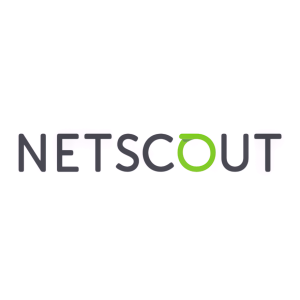Bad Actors Innovate, Extort and Launch 9.7M DDoS Attacks in 2021 According to the Latest NETSCOUT Threat Intelligence Report
Ransomware Gangs, DDoS-for-Hire Services, and Server-Class Botnet Armies
Make Attacks Easier to Launch with Greater Sophistication
The report details how the second half of 2021 established high-powered botnet armies and rebalanced the scales between volumetric and direct-path (non-spoofed) attacks, creating more sophisticated operating procedures for attackers and adding new tactics, techniques, and methods to their arsenals.
“While it may be tempting to look at the decrease in overall attacks as threat actors scaling back their efforts, we saw significantly higher activity compared to pre-pandemic levels,” said
Other key findings from the NETSCOUT 2H2021 Threat Intelligence Report include:
- DDoS Extortion and Ransomware Operations are on the rise. Three high-profile DDoS extortion campaigns simultaneously operating is a new high. Ransomware gangs including Avaddon, REvil, BlackCat, AvosLocker, and Suncrypt were observed using DDoS to extort victims. Because of their success, ransomware groups have DDoS extortion operators masquerading as affiliates like the recent REvil DDoS Extortion campaign.
-
VOIP Services were Targets of DDoS Extortion. Worldwide DDoS extortion attack campaigns from the REvil copycat were waged against several VOIP services providers. One VOIP service provider reported
$9M -$12M - DDoS-for-Hire services made attacks easy to launch. NETSCOUT examined 19 DDoS-for-Hire services and their capabilities that eliminate the technical requirements and cost of launching massive DDoS attacks. When combined, they offer more than 200 different attack types.
-
APAC attacks increased by
7% as other regions subsided. Amid ongoing geopolitical tensions inChina ,Hong Kong , andTaiwan , theAsia-Pacific region saw the most significant increase in attacks year over year compared to other regions. - Server-class botnet armies arrived. Cybercriminals have not only increased the number of Internet-of-Things (IoT) botnets but have also conscripted high-powered servers and high-capacity network devices, as seen with the GitMirai, Meris, and Dvinis botnets.
- Direct-path attacks are gaining in popularity. Adversaries inundated organizations with TCP- and UDP-based floods, otherwise known as direct-path or non-spoofed attacks. Meanwhile, a decrease in some amplification attacks drove down the number of total attacks.
-
Attackers targeted select industries. Those hardest hit include software publishers (
606% increase), insurance agencies and brokers (257% increase), computer manufacturers (162% increase), and colleges, universities, and professional schools (102% increase) -
The fastest DDoS attack recorded a
107% year-over-year increase. Using DNS, DNS amplification, ICMP, TCP, ACK, TCP RST, and TCP SYN vectors, the multi-vector attack against a target inRussia recorded 453 Mpps.
NETSCOUT's Threat Intelligence Report covers the latest trends and activities in the DDoS threat landscape. It covers data captured from NETSCOUT's Active Level Threat Analysis System (ATLAS™) coupled with insights from NETSCOUT's ATLAS Security Engineering & Response Team.
The visibility and insights compiled from the global DDOS attack data, which is represented in the Threat Intelligence Report and can be seen in the Omnis Threat Horizon portal, fuel the ATLAS Intelligence Feed used across NETSCOUT's Omnis security portfolio to detect and block threat activity for enterprises and service providers worldwide.
Visit our interactive website for more information on NETSCOUT's semi-annual Threat Intelligence Report. You can also find us on Facebook, LinkedIn, and Twitter for threat updates and the latest trends and insights.
About NETSCOUT
©2022
View source version on businesswire.com: https://www.businesswire.com/news/home/20220322005111/en/
Editorial Contacts:
Manager,
+1 781 362 4330
maribel.lopez@netscout.com
+1 404 502 6755
NETSCOUT-US@FinnPartners.com
Source:







